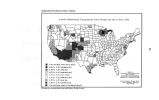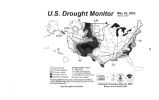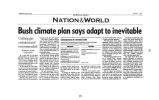| OCR Text |
Show 4 Mr. CANNON. We would like to welcome you all to this hearing and thank you for the documents and other things given to us recently. I want to thank Mr. Matheson for being here with us today and also from out of state we have the pleasure of having Lynn Woolsey here from California and Brian Baird from Washington State, who are Members of the Science Committee and deeply interested in the issue today of the western drought. Interestingly, Utah is the second driest state in the United States and Utah has just finished its third consecutive year of drought. The driest state, by the way, is Nevada. So we are at the top of the list there. This year Utah experienced one of the lowest snowpacks in history. Combined with lower than average precipitation, the situation is dire for Utah ranchers. Last month Governor Leavitt declared a statewide agriculture disaster due to the drought, and the following week he issued an additional disaster declaration based on the grasshopper and Mormon cricket infestation within our state. These two disasters together have the potential to wipe out Utah's agricultural industry. The cricket problem is going to finish off what small amount of vegetation survives the drought. Last month Senator Hatch and I met with James Little, Administrator of the Farm Service Agency and asked for Federal assistance for Utah Farmers. And as result of that meeting, the Secretary of Agriculture, Ann Veneman, authorized emergency grazing on the CRP lands in Southern Utah. We hope this will give our ranchers some temporary relief. As I look out over the audience, I see Booth Wallentine with us here who represents the Utah Farm Bureau. Welcome, Booth. We all deeply appreciate the farmers in America, and the fact that we eat food that seems to me to be cheaper every year. Due to the simple nature of the droughts in the Western United States it is important we have a clear understanding of the causes and effects of drought in our region. This ultimately will enable the states to develop plans to weather our drought cycles. We look forward to hearing the testimony of our witnesses. They all have a welcome knowledge in the area. It should be very imformative. At this time I would like to give Mr. Matheson the opportunity for an opening statement. [ The prepared statement of Mr. Cannon follows:] PREPARED STATEMENT OF REPRESENTATIVE CHRIS CANNON I would like to start by thanking Mr. Matheson, Mr. Baird and Ms. Woolsey, and Members of the Science Committee staff for being present today. The topic of today's hearing, the western drought is very timely. Indeed, Utah is the second driest state in the Nation, and it has just finished its third consecutive year of drought. This past year Utah has experienced one of the lowest snowpacks in history. Combined with lower than average precipitation the situation is dire for Utah ranchers and farmers. Last month Governor Mike Leavitt declared a statewide agricultural disaster due to the drought, and the following week he issued an additional disaster declaration based on the grasshopper and Mormon cricket infestation within our state. These two disasters together have the potential to wipe out Utah's agricultural industry. The crickets will finish off what small amount of vegetation survives the drought. Last month I met with James Little, administrator of the Farm Service Agency to ask for federal assistance for Utah farmers. As a result of that meeting Secretary |


























































































